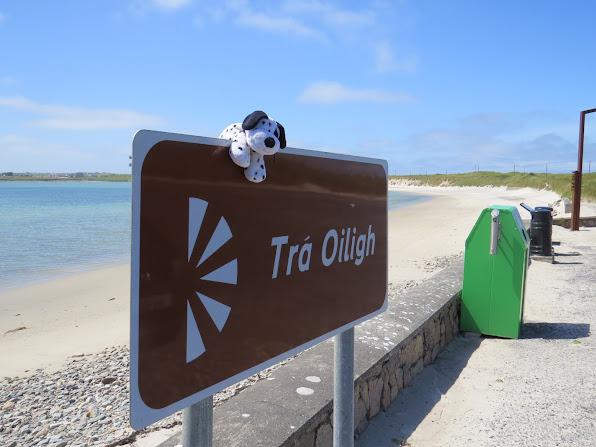
After a few days second guessing the temperamental weather, we eventually bit the bullet, drove to Cleggan and sailed over to Inishbofin, Inis Bó Finne - the island of the white cow. When we got there, we had a choice of doing the westerly loop or the easterly one. We chose the former. The tarmac soon gave way to a track, which soon gave way to rough stones and open clifftop walks.
Although it was July, the number of people gradually dwindled and we were able to get some great social distancing in, making sure not to get too close to the cliff edges. The sun shone and there was a great feeling of serenity on the island.
Our departure point of Cleggan is well inside the Galway harbour though it came as a surprise to learn that the island is actually north of Killary Fjord which marks the Mayo / Galway border. In fact, Inishbofin was once a part of Mayo. The islanders must sometimes wish that was still the case as Mayo County Council are very good at whitewashing their coastal beacons, whereas Galway Co. Co can't be arsed. Inishbofin has three very striking and ancient beacons marking the entrance to the harbour.



































